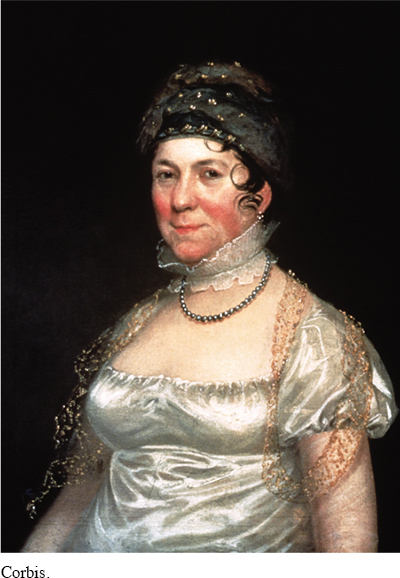The American Promise: Printed Page 264
The American Promise, Value Edition: Printed Page 243
The American Promise: A Concise History: Printed Page 276
Dolley Madison and Social Politics

Although women could not vote and supposedly left politics to men, the female relatives of Washington politicians took on several overtly political functions that greased the wheels of the affairs of state. They networked through dinners, balls, receptions, and the intricate custom of “calling,” in which men and women paid brief visits at each other’s homes. Webs of friendship and influence in turn facilitated female political lobbying. It was not uncommon for women in this social set to write letters of recommendation for men seeking government work.
Dolley Madison developed elaborate social networks during Jefferson’s presidency that were of great benefit during her husband’s administration. Called by some the “presidentress,” she struck a balance between queenliness and republican openness. She dressed the part in resplendent clothes and opened three elegant rooms in the executive mansion for a weekly open-
In 1810 to 1811, the Madisons’ house acquired its present name, the White House. The many guests experienced simultaneously the splendor of the executive mansion and the atmosphere of republicanism that made it accessible to so many. Dolley Madison, ever an enormous political asset to her rather shy husband, understood well the symbolic function of the White House to enhance the power and legitimacy of the presidency.